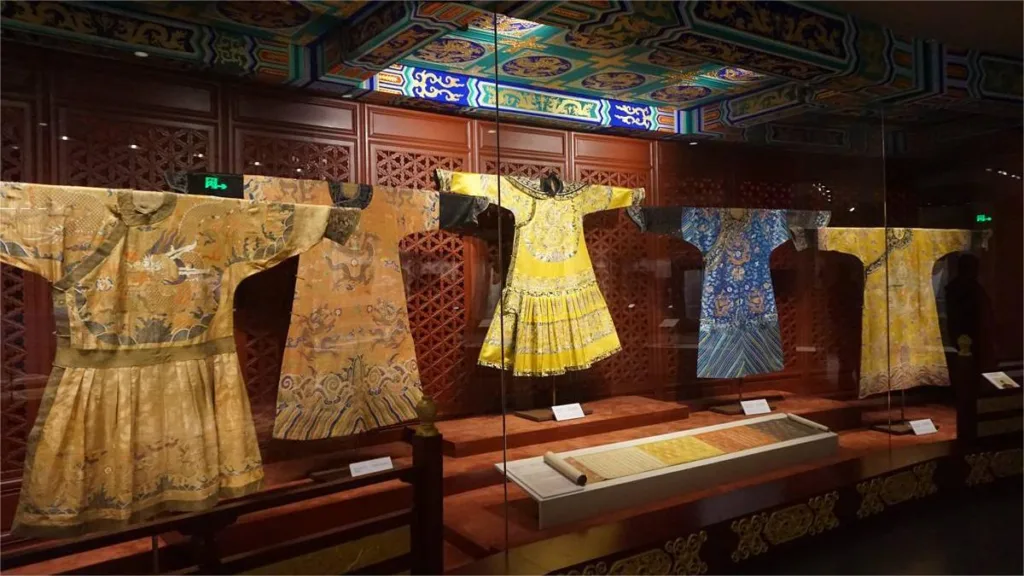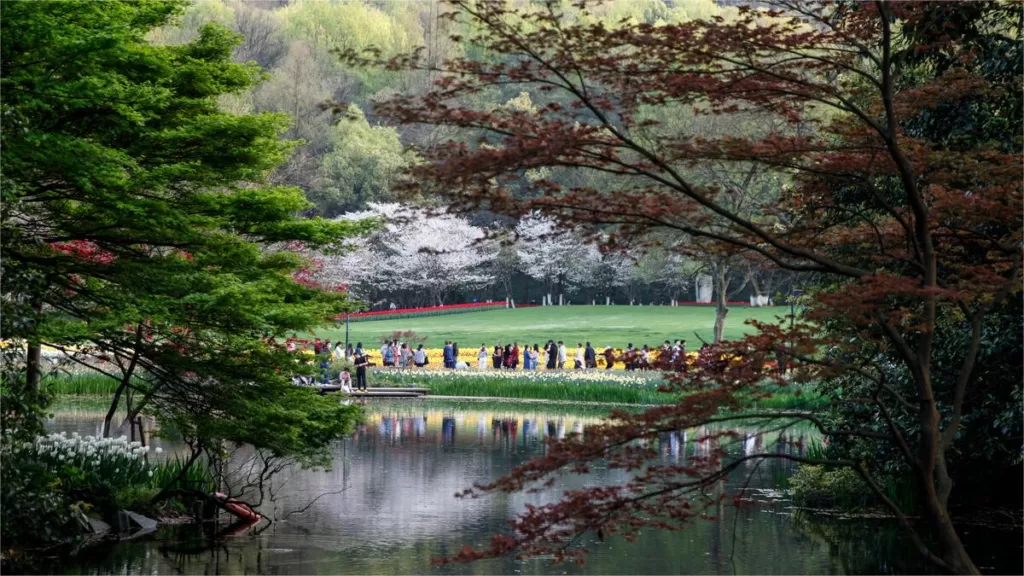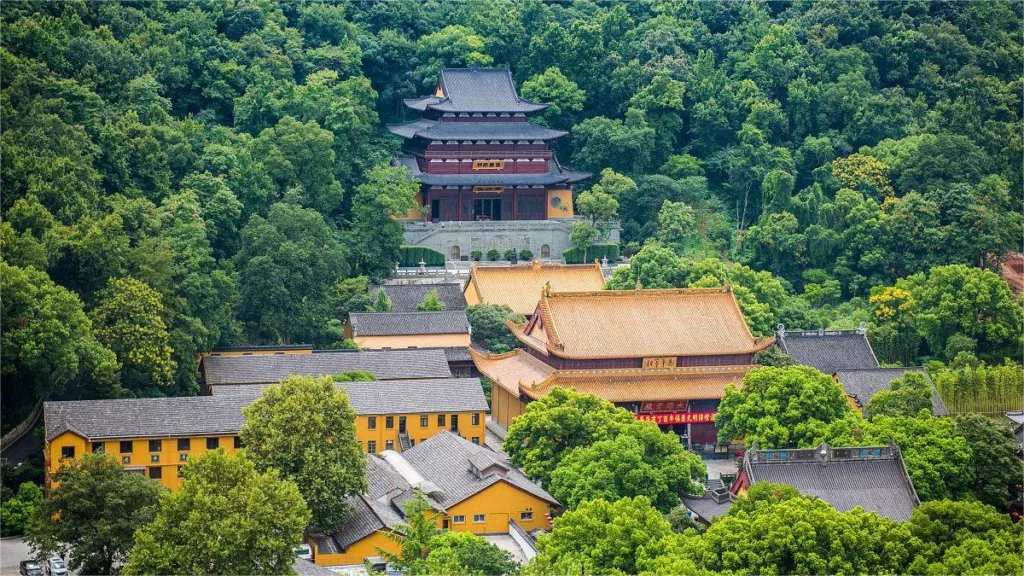The China National Silk Museum (中国丝绸博物馆) is the largest silk museum in the world. Covering an area of 42,286 square meters, with an exhibition area of 5,000 square meters, the museum tells the story of silk through five halls. These halls cover topics such as the origin and development of silk, the main types of silk, the production process, the Silk Road, and the role of silk in ancient society. Visitors can also receive guidance from staff on how to distinguish genuine silk from counterfeit.
The museum’s collection includes significant artifacts such as the Warring States period dragon and phoenix pattern silk, the Han and Jin Dynasty long longevity and offspring silk, Northern Dynasties twisted weave silk garments, Tang Dynasty brocade sleeve floral pattern damask robes, Tang Dynasty floral and bird pattern embroidered damask robes, Liao Dynasty gold embroidered floral and geese pattern damask, and Song Dynasty floral pattern skirt and trousers, among others.
Table of Contents
- Basic Information
- Location and Transportation
- Exhibitions in China National Silk Museum
- Vlog about China National Silk Museum
- Attractions near China National Silk Museum
Basic Information
| Estimated Length of Tour | 2 – 3 hours |
| Ticket Price | Free |
| Opening Hours | 9.00 – 17.00; Last admission: 16.30 |
| Telephone Number | 0086-0571-87035223 0086-0571-87035150 |
Location and Transportation
The China National Silk Museum is located at 73-1 Yuhuangshan Road, Xihu District, Hangzhou, Zhejiang Province, China, on the south side of West Lake. To get there, you can take bus 12, 31, 42, or 87 and get off at China Naitonal Silk Museum Stop (中国丝绸博物馆站).
Exhibitions in China National Silk Museum
Entrance Hall

The Entrance Hall is dominated by a towering model of a Song Dynasty Jacquard loom, one of the earliest known types of Jacquard looms. The walls on the left and right sides of the hall display timelines of silk history and maps of the Silk Road, while the rear wall provides an overview of China’s achievements in silk production and sales, showcasing its leading position in the world.
Historical Relics Hall

This hall focuses on showcasing the essence of silk artifacts spanning 5,000 years of history. It maintains a constant temperature and humidity to ensure the preservation of delicate silk relics. It is divided into two sections based on historical periods: one section introduces the development of silk from the Neolithic period to the Song, Liao, and Yuan dynasties, while the other section specifically displays royal treasures from the Ming and Qing dynasties, as well as archaeological excavations.
Silkworm Hall

In the Silkworm Hall, visitors can explore the natural properties of silkworms through interactive and educational displays. The exhibition is organized into eight sections, including “Magical Transformations,” “Mulberry Leaves, the Favorite Food of Silkworms,” “Mysteries of the Silkworm’s Body,” “Silkworm Cocoons,” “Silk,” “Beautiful Silk-Spinning Insects,” “The Home of Silkworm Farmers,” and “Utilization of Mulberry Trees and Silkworms.” It utilizes specimens of mulberry leaves, silkworms, and moths, along with colorful illustrations, and multimedia presentations to reveal the mysteries of silk production. Touchscreen displays demonstrate processes such as silkworm feeding, cocoon spinning, and the anatomy of silkworms, as well as cultural practices related to silkworm farming in various regions.
Dyeing and Weaving Hall

This hall showcases the weaving and dyeing processes of silk, presenting vivid models of looms to help visitors understand the ancient Chinese silk production process. The exhibition is divided into five sections: “Craft Process,” “Silk Thread Processing,” “Principles of Looms,” “Loom Structure,” and “Dyeing System.” Additionally, a “Learning Area” is set up where visitors can engage in hands-on activities to create silk crafts, providing a firsthand experience of silk craftsmanship. Moreover, a “ZIS Textile Computer Design System” is installed on multimedia platforms, allowing visitors to design fabric textures and patterns under the guidance of professionals.
Silk Hall

The Silk Hall is divided into three sections: “Introduction,” “Origin and Development of Silk,” and “Colorful Chinese Silk,” illustrating the development history and diverse styles of silk textiles. Through the display of exquisite silk fabrics from various dynasties, magnified models showcasing the organizational structure of Ming and Qing government-produced silk, and scenes depicting fabric observation and embroidery, visitors can gain a comprehensive understanding of silk fabrics and their production techniques.
Weaving Workshop

The Weaving Workshop is an open-plan exhibition hall focused on the live operation demonstrations of looms, showcasing both contemporary and reconstructed ancient looms still in production. Thirteen diverse looms are arranged around the theme of reconstructed looms, Jiangnan dyeing and weaving, and minority ethnic group looms.







